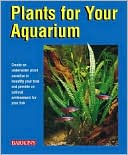"It is difficult to say what is impossible,
for the dream of yesterday
is the hope of today
and the reality of tomorrow."
Robert H. Goddard (1882 - 1945)
I almost thought that there's no more hope for King Kong dream .....
After almost A YEAR ....
This is not a regular crystal black shrimp.
It carries King Kong's gene.
---- A GENE SHRIMP
Pay attention to its belly. What do you see?
A closer look??
It is obvious that two eggs are in blue color. And one is in light blue.
It is said that during the last week of hatching period, black king kong egg will be very different from others. If the mother is a gene shrimp, the egg may tend to be blue color.
Which means this gene shrimp may have black king kong baby.
Expecting ~~~~










































